#liphistiidae
Text
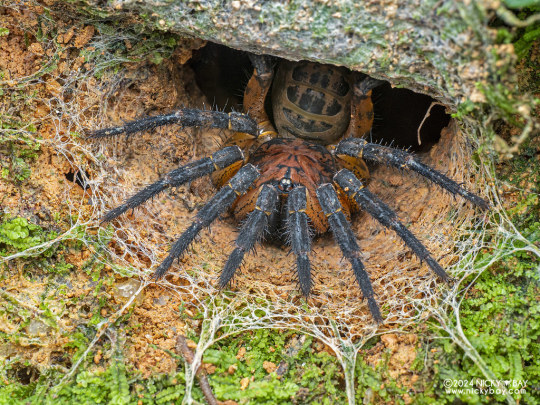
#IFTTT#Flickr#malaysia#penang#macro#armored#segmented#trapdoor#spider#liphistiidae#liphistius#desultor
9 notes
·
View notes
Text
With the release of the new Spider-Man movie, I remembered a manga with lots of interesting info on spiders and I thought that people would be interested (for their spidersonas or something else).
It's "Arachnid" by Shinya Murata which is a manga... that I frankly do not recommend because of the unhealthy sexualization of minor characters (I stopped at volume 2 before resuming for this post). But the information is very detailed so here is the list:
Liphistiidae (the most primitive species of spiders): does not weave a web but stretches threads all around its nest, which is in a hole. Manages to detect its prey thanks to the vibrations caused by their passage. Does not react if its wires vibrate due to rain or dead leaves. Able to sense the nature of external events solely through the vibrations of its taut threads.
A spider's thread is stronger than steel, it's the sturdiest natural fiber known. It is resistant to a variety of solvents and even has qualities that make it conductive of heat.
Ariamnes cylindrogaster simon: Some spiders are specialized in hunting other spiders. This variety is able to camouflage itself in small branches and foliage. It usually weaves a thread between two branches and then hides. When a spider climbs the wire, thinking it's a shortcut, the ariamnes pounces on its prey.
Some spiders have a 3rd claw to better manipulate their threads. This toothless claw allows the manipulation of webs to the nearest micron, just with the end of its legs, these spiders can develop and weave traps of great complexity.
Heteropoda venatoria : some spiders' main food is the cockroach (which has a reaction time of 0.044s). Thanks to the ability to analyze every dangerous situation with immense concentration, this spider does not need any strategy, so the cockroach cannot guess its actions. Just one of these spiders in a house can quickly eradicate them.
Male cyclosa sedeculata: uses its threads when a female approaches. He stretches a communication wire whose vibrations allow them to "communicate". This thread that connects them is specific and prevents the female from being confused with simple prey. It's a natural communication tool that allows to know the situation of the other even from a distance.
A spider does not prepare for battle. When it comes time to fight, humans adopt various stances. It also exists in some spiders but the majority remain motionless. The more the spider feels in danger, the less it seems to be prepared. It shows docility, which reassures their predators, but when it comes too close, it attacks.
Argyroneta aquatica: there are no amphibious spiders, however some have managed to reproduce living conditions under water that resemble those on land. This spider is the only one capable of weaving underwater. By trapping air bubbles with its web, it can acquire an abdomen which constitutes an important reserve of oxygen for it. By making an air nest, she is even able to hunt, rest or lay eggs underwater.
Salticidae: jumping is the most common hunting technique among spiders and especially this one. It fixes its prey and when it decides to attack, it releases a large quantity of hormones which gives its legs phenomenal power. Researchers have calculated that its explosiveness was just 0.01s, 50 times faster than humans, and is able to jump up to 3 times its size. In full jump, it can quickly switch to attack mode because the world seems shortened to it because of itsextraordinary powers of concentration.
Bonus (because I found this info elsewhere): they have the sharpest vision known for animals of their size (between 1 millimeter to 2.3 centimeters long).
Hyptiotes analis: high-speed prey specialists. Nicknamed "fan" spiders because they weave true fans which they then hold tightly, waiting for aerial prey to rush into their threads to then use the shock of the collision and pounce. All it has to do is close the trap firmly on its prey. Its triangular webs are special, designed to withstand heavier and faster prey.
(In the story, the heroine also uses this to control her victims like puppets, and even herself when she no longer has the strength to move. It's also thanks to the "3rd claw")
Caerostris darwini: capable of weaving webs around 1000 times its size. Despite its 18mm long, it can make the largest web in the world, up to 25m in diameter and deployed on either side of a river.
Aphantochilus rogersi : infiltrates anthills to feed. To get past their safeties, it picks up the head of a dead ant and carries it with it. It responds with the ants' requests for saliva and thus pretends to be one of them. Despite their complex societies, at the forefront of evolution and their perfect identification system, ants have been completely fooled by this method.
Deinopis: able to capture its prey despite extreme low light. If we compared the ability of his eyes to absorb light to that of a camera lens, the aperture value would be 0.58. This far surpasses the ability of the eyes of other nocturnal animals or man-made objects.
Bonus :
Hexophthalma hahni: its very powerful venom causes a hemolytic (rupture of red blood cells and release of hemoglobin) and necrotic (destruction of cells and tissues) effects. Unlike neurotoxic venom, which attacks the nervous system, the sand spider's hemotoxic poison has no known cure.
Atrax robustus: very aggressive, especially during the breeding season. When threatened, the Australian tarantula rears up on its hind legs and shows off its massive fangs capable of piercing a fingernail. Its venom causes severe pain sometimes followed by vomiting and respiratory problems. Its bite can be fatal in children and fragile people if a serum is not administered within an hour of the attack.
Theraphosa blondi (largest tarantula in the world): its 5 cm long fangs can pierce the skull of a mouse and cause severe pain in humans. She also has stinging hairs on the back of her abdomen that cause severe itching.
Heteropoda maxima: one of the largest spiders in the world (35cm). Particularly fast (faster than humans over a short distance) and agile, it does not weave a web, but uses its long legs to pounce on its prey.
Maratus volans (or dubbed peacock spider): considered the most beautiful spider in the world

Spiders are excellent dancers (useful during breeding season so especially a talent for males).
They can carry 170 times their weight (I thought it was 20).
If anyone has any other informations or corrections, I'm all ears.
#For my foes on Discord#spider man: across the spider verse#spiderman atsv#spiderman#atsv#spider#across the spiderverse#spidersona#into the spiderverse#spiderverse#across the spider verse#miles morales#hobie brown#spider society#spiderverse oc#spiderman into the spiderverse
52 notes
·
View notes
Photo

Allah's Creation . . . #allah #allahswt #allahuakbar #islam #islamic #islamicquotes #islamicreminder #islamicreminders #creationofallah #allahscreation #animal #animals #animalia #animalkingdom #nature #signsofallah #spider #arthropods #liphistiidae https://www.instagram.com/p/B-5_JQwJyjf/?igshid=1aht584sfpiyf
#allah#allahswt#allahuakbar#islam#islamic#islamicquotes#islamicreminder#islamicreminders#creationofallah#allahscreation#animal#animals#animalia#animalkingdom#nature#signsofallah#spider#arthropods#liphistiidae
1 note
·
View note
Text

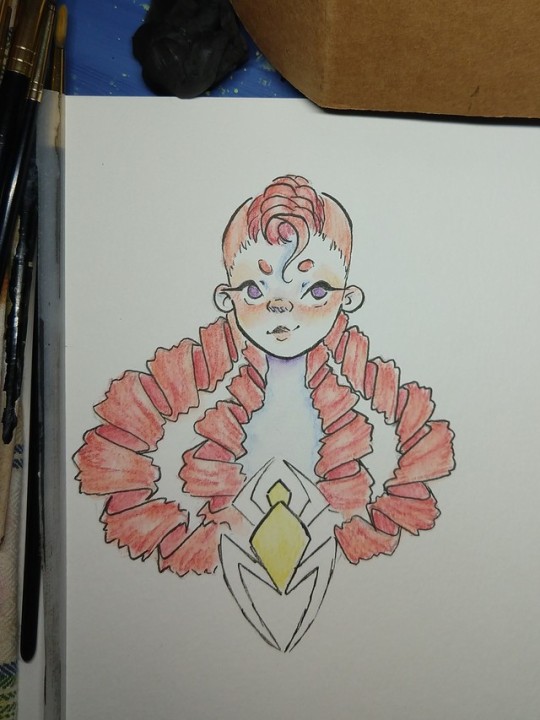
Doodle of Liphistiidae's civilian appearance. Also an excuse to draw ringlets
#art#original art#original character#spiderman#spiderman into the spiderverse#spidersona#spideysona#my art#spoderman#into the spider verse#watercolor#liphistiidae#oc#watercolor art
14 notes
·
View notes
Link
Liphistius malayanus commonly called Trapdoor Spider. Photo by Lim Teckwyn. #TrapdoorSpiders
0 notes
Text
Fossilised spiders with 'tails' found in Myanmar rainforest
Visit Now - http://zeroviral.com/fossilised-spiders-with-tails-found-in-myanmar-rainforest/
Fossilised spiders with 'tails' found in Myanmar rainforest
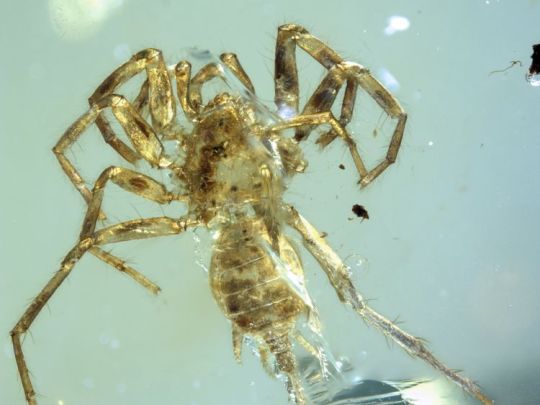
Scientists have discovered the fossilised remains of a previously unknown species of arachnid boasting a scorpion-like tail even longer than its body.
The ancient arachnids – found in 100 million-year-old amber in a northern Myanmar rainforest – have tail-like appendages on their abdomens called spinnerets, which would have been used to make webs.
At 3mm, the tail extends beyond the newly christened Chimerarachne yingi’s 2.5mm body and the international scientists behind its discovery say it links today’s spiders with those that lived before dinosaurs.
In an article written for the Nature Ecology and Evolution journal, the researchers say it resembles a 300 million-year-old arachnid known as Attercopus, which also had a long tail and produced silk from hairs on its abdomen.
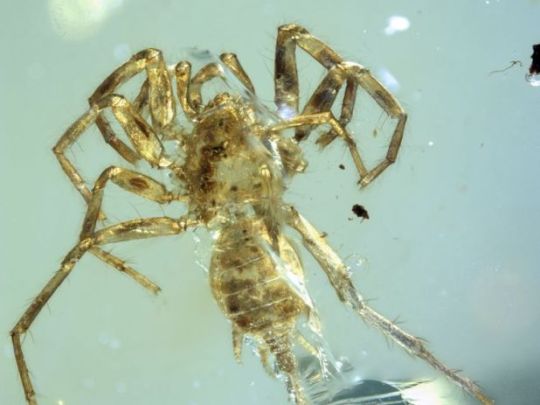
Image:
The fossils date back 100 million years
Chimerarachne yingi – or the chimaera spider – have other spider-like characteristics too, including four sets of legs and fangs.
Professor Paul Selden, who was involved in the discovery of Attercopus three decades ago, said: “The new fossils are like the missing link from older animals to modern spiders.”
He believes the chimaera spider would have lived in the bark of resin-producing trees during the Cretaceous period and used its long tail to sense its environment like an antennae, similarly to some types of scorpions.
As for its silk-producing capability, scientists believe it resembles a primitive family of trapdoor spiders known as the Liphistiidae, which are found in southeast Asia.
Other species of insects, including millipedes and modern spiders, were also found alongside the four chimaera fossils.
Professor Selden said it was not inconceivable that the chimaera could even still be alive today.
“They look like these older creatures so it’s rather a surprise to see them alongside spiders,” he said of the insects found alongside the fossils.
“You’ve effectively got the typically southeast Asian tropical rainforest, but with these sort of living fossils in with them.
“And in fact there’s nothing to say that they’re still not living there today for what we know because the region is not a well-studied area.”
0 notes
Text

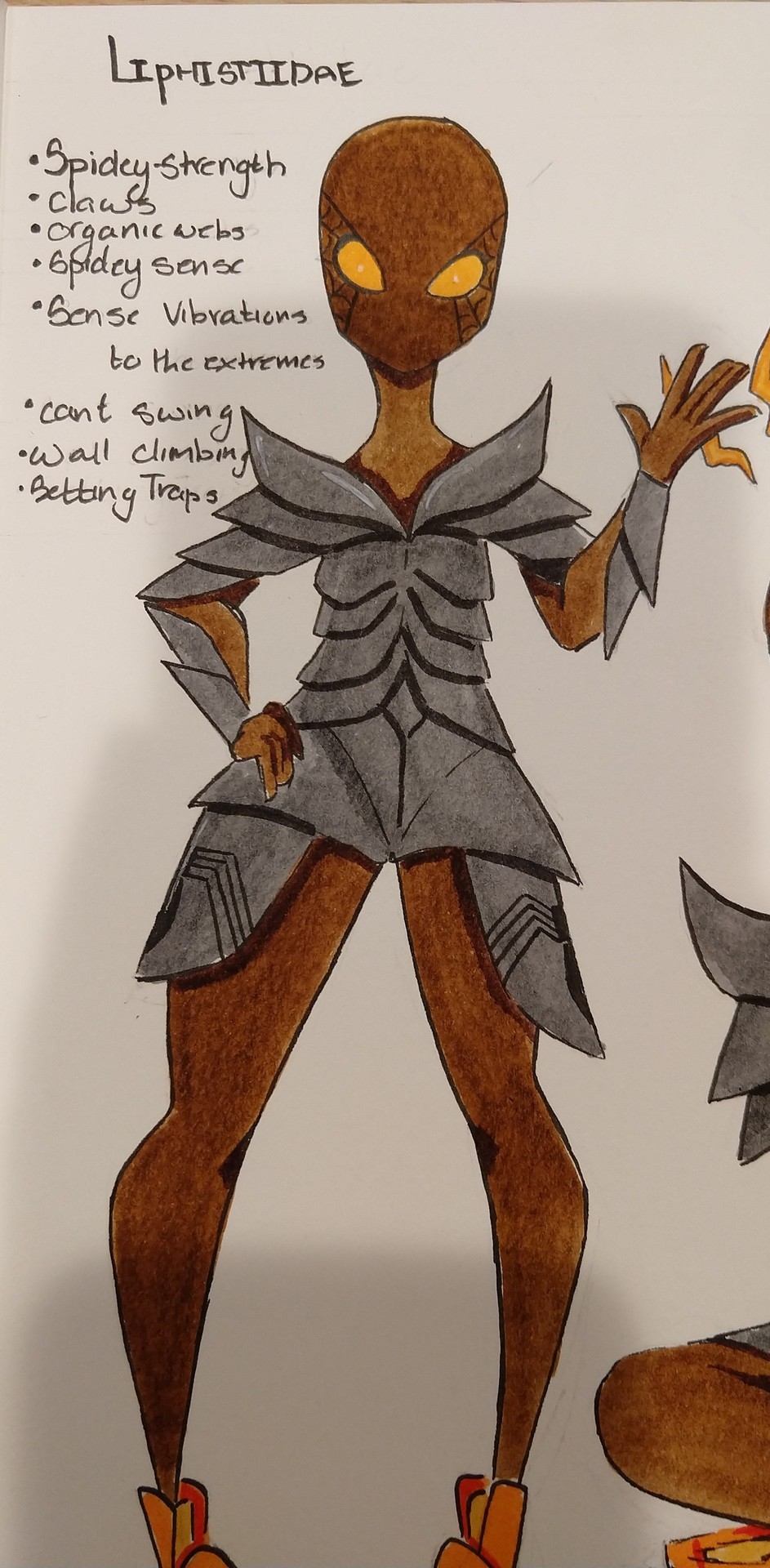
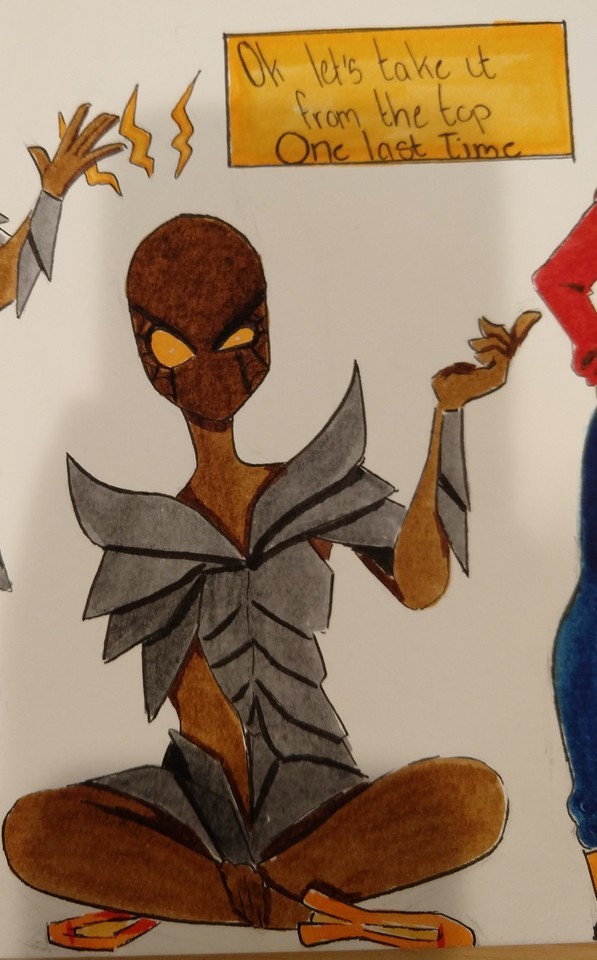
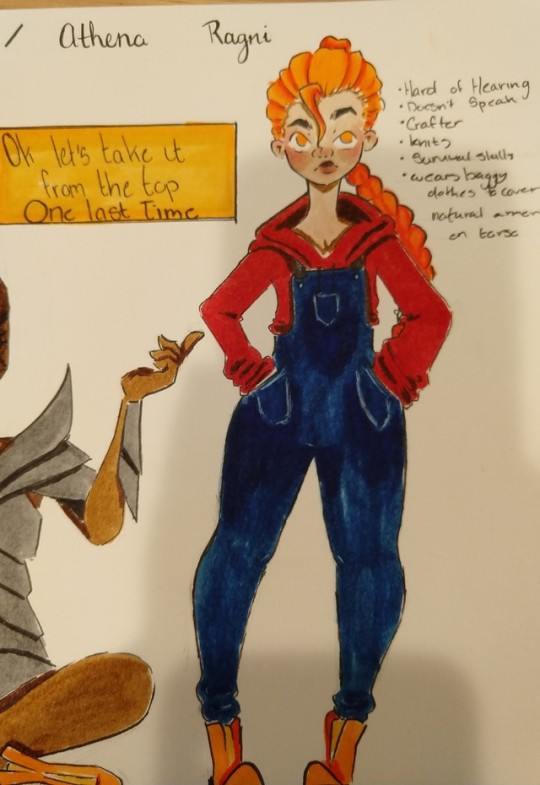
Full spread of my spidersona, Liphistiidae, aka Athena Ragni
#art#original art#spiderman into the spiderverse#spiderman#spideysona#spidersona#spoderman#Liphistiidae
17 notes
·
View notes
Text


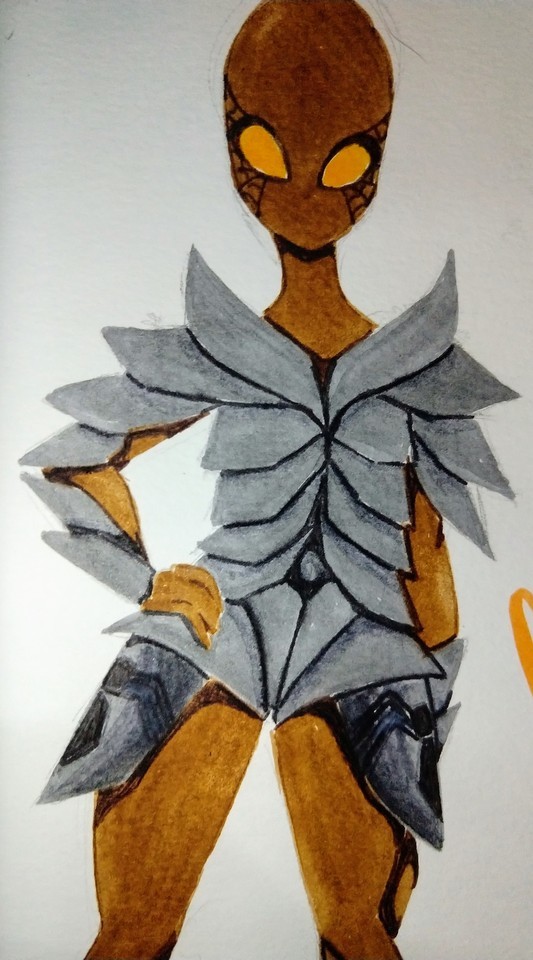
Spidersona based off of the Black Armored Trapdoor Spider, a species of spider that is known for lurking in traps. She goes by the name Liphistiidae (I realize that I forgot an 'i' in the drawing) and is a much more undercover vigilante, preferring to lurk and only go out at night. Her webs are organic, she has natural armor over her torso, as well as the armor portion of her suit, as well as sharp claws on her hands and a extremely good night vision.
She's nocturnal and prefers to lurk. She doesn't speak. Traps are her specialty and her web is made for building them, rather than swinging around. She's also has the usual wall climbing and spider sense.
She's weak to bright lights, she's a bit tankier so she's not as fast and agile.
She's also very sensitive to vibrations, being able to sense them extremely well in and through the earth.
She's hard of hearing.
#spidersona#spideysona#spiderman#spiderman into the spiderverse#spoderman#hoppin on board this bandwagon because i love me a good spoderman#oc#my art#tombow#traditional art#Liphistiidae
14 notes
·
View notes
Text
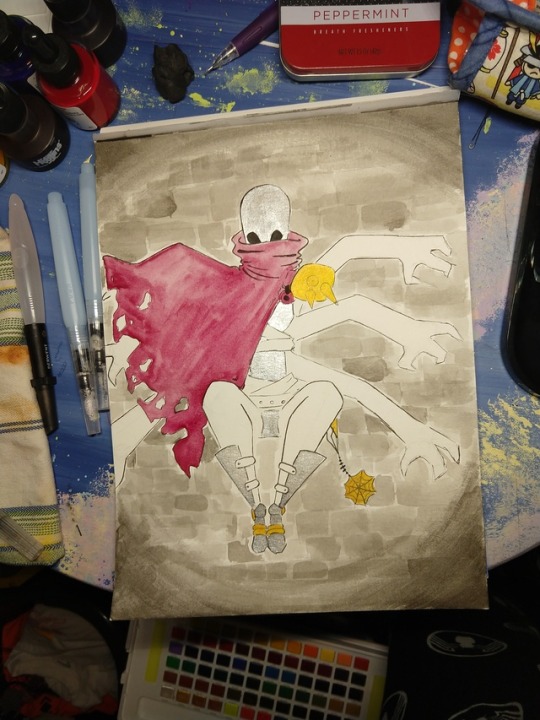
Making the shiny pieces of Liphistiidae's outfit is really fun
And the piece is coming along really nicely
Also, I'm considering designing a symbiote for Liphi
#art#original art#original character#my art#spiderman#spiderman into the spiderverse#spidersona#spideysona#watercolor#spoderman#into the spider verse#liphistiidae
6 notes
·
View notes
Text
Figuring out Liphistiidae's appearance under the mask. She's a Victorian era Spiderperson so I figured ringlets would look really nice

#art#original art#original character#spiderman into the spiderverse#spiderman#spidersona#spideysona#spoderman#into the spider verse#liphistiidae#oc
6 notes
·
View notes
Text
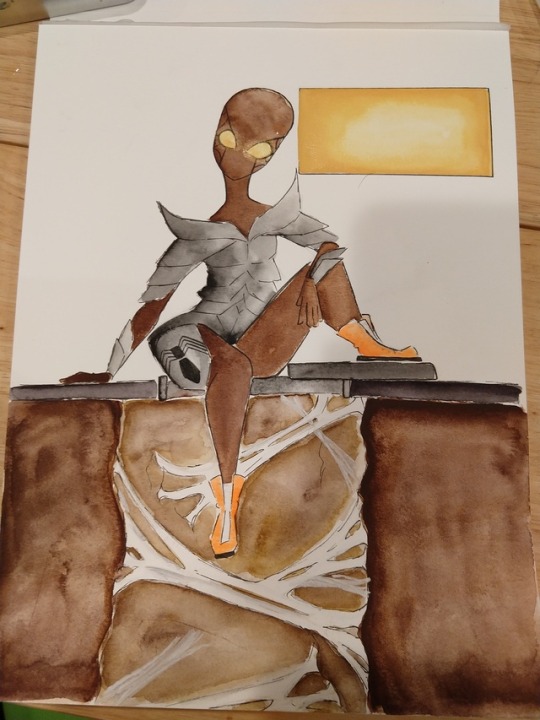
Got new watercolors today, so to test some of them out, I decided to try out a larger piece for Liphistiidae. Not sure how I like it
#art#original art#original character#my art#watercolor#spidersona#spiderman into the spiderverse#spideysona#spiderman#Liphistiidae
5 notes
·
View notes
Text
First art piece of the year is a comic book cover style piece of my Spidersona, Liphistiidae

#art#original art#original character#my art#spiderman#spiderman into the spiderverse#spidersona#spideysona#into the spider verse#spoderman#liphistiidae
4 notes
·
View notes
Text
A far more colored in version of my spider child, Liphistiidae, or Liphi. Shes nocturnal, practically lives underground, has purple skin, and likes to trap criminals before she murders them. I love her and she loves armor. She may be Hard of Hearing but she can feel vibrations very well and is ready to throw hands.

#art#original art#original character#my art#spiderman#spiderman into the spiderverse#spidersona#spideysona#watercolor#spoderman#into the spider verse#oc#liphistiidae
4 notes
·
View notes
Text
WIP of a gouache painting of my Spidersona, Liphistiidae

#art#original art#original character#spiderman#spiderman into the spiderverse#spidersona#my art#spideysona#spoderman#into the spider verse#liphistiidae#oc#gouache
3 notes
·
View notes
Text
Doodling my Spidersona, Liphistiidae, some more. Gave her flourecent red sneakers to go with her generally earth colored suit. Current WIP for her, haven't colored in the ground or her suit

#Liphistiidae#oc#spoderman#spiderman into the spiderverse#spiderman#spideysona#spidersona#into the spider verse#spiderverse
3 notes
·
View notes
Text
I got that evening urge to redesign Liphistiidae as a spider villain. So I might just do that. A lot'll probably stay the same, but some stuff'll be different
#original character#spiderman#spiderman into the spiderverse#spidersona#spideysona#spoderman#into the spider verse#liphistiidae#oc
1 note
·
View note